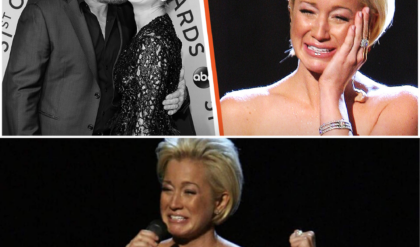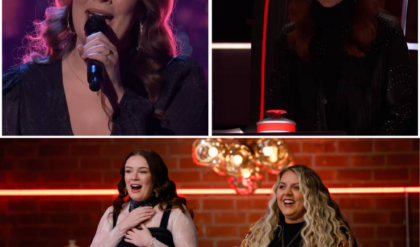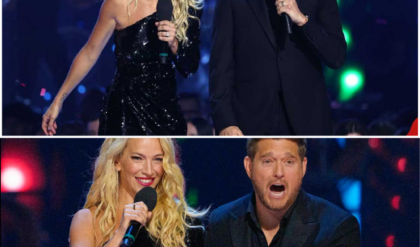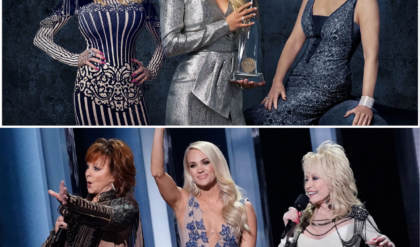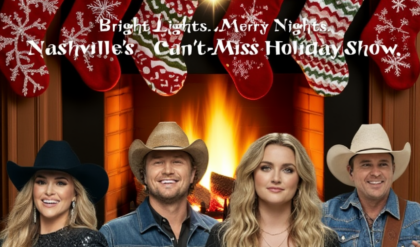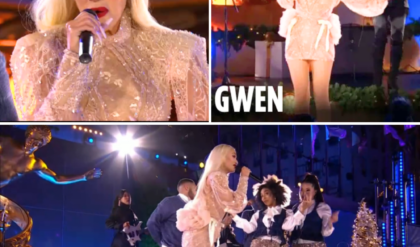
Sitting down to write this review of ‘The Rings of Power‘ Season 2, I could think of a few memorable moments. A swarm of butterflies coalesces into a humanoid figure. A choir of singers communes with the earth in gorgeous harmony. A horde of spiders closes in on a helpless prisoner, their lair so fetid you can practically smell it.
What I cannot think of are any characters I particularly care about, or any emotions I felt as they traversed Middle-earth. That’s par for the course with this Amazon drama, the billion-plus-dollar, much-ballyhooed prequel to “The Lord of the Rings.” Two years ago, the first season was initially met with polite praise by critics, who rightly lauded the show’s visual worldbuilding, while noting the actual story was not yet its equal. With audiences, however, “The Rings of Power” landed with a thud that would echo throughout the dwarf settlement of Khazad-dûm. According to the Hollywood Reporter, just 37 percent of the domestic viewers who began the eight-episode series watched it through to completion. That’s not ideal for a standard release, let alone the highest-profile production in the history of one’s streaming service. Season 2 offers no reason to believe this trend in viewership will be reversed. As for the season’s creative quality, the grace period for this lavish Tolkien homage has run out — though it’s debatable whether a project afforded so many resources deserved one in the first place. (To be fair, reports that Jeff Bezos had demanded Amazon’s answer to “Game of Thrones” colored perceptions of “The Rings of Power” long before its premiere, ensuring it would be compared to more than just Peter Jackson’s trilogy.) With a shape-shifting Sauron unmasked and the first set of the titular bling forged, “The Rings of Power” finally has the faintest hints of narrative momentum. But the second installment of this show, as gorgeous yet flat as a kitchen backsplash, has the same problems as the first, minus much confidence these issues will ever go away.
Set during Middle-earth’s Second Age, between the mythic pre-history of “The Silmarillion” and the climactic struggles of “The Lord of the Rings,” “The Rings of Power” faces the same challenge as many prequels. Even the greenest of fantasy neophytes are aware the elf Galadriel (Morfydd Clark) will fail to stop Sauron (Charlie Vickers) from creating the One Ring and establishing a base of power in Mordor, and that when human warrior Isildur (Maxim Baldry) cuts the Ring from Sauron’s hand, it kills the villain’s corporeal form but not his powerful influence. There’s an avid, yet limited, core of fans excited to see Isildur’s hometown of Númenor, an advanced but soon-to-be-fallen human city, or nomadic, pre-Shire hobbits, then known as harfoots. For everyone else, however, there’s a need to generate suspense or simply interest independent of an already known outcome.
Other successful prequels, like “Better Call Saul” and — yes — “House of the Dragon,” have doubled down on a sense of tragedy, using that shared knowledge to stress the futility and self-defeating nature of its characters’ actions. But “The Rings of Power” wants to be lighter and altogether more wholesome than these decidedly not family-friendly peers. That’s the prerogative of showrunners Patrick McKay and J.D. Payne, as well as their corporate sponsors; it’s also in keeping with the source material, which began as a children’s novel with “The Hobbit.” Avoiding those themes still places even more weight on character development and other means of holding our attention — and that’s where “The Rings of Power” continues to fall short. The most compelling strain of Season 2 is, in fact, the grimmest. Having abandoned his disguise as Halbrand, the human King of the Southlands and Galadriel’s ally, Sauron is now posing as Annatar, a supposed emissary of the godlike Valar. In this form, Sauron preys on the vanity and naiveté of elven smith Celebrimbor (Charles Edwards) to manipulate his target into manufacturing the Rings. The trio of objects made last season are a success, saving the Elves from decay and giving their new wearers clairvoyant powers. Sauron builds on that triumph to cajole Celebrimbor into a much riskier endeavor: crafting rings for dwarves and even men, with Sauron on hand to corrupt the process and thus its final results. The One Ring is still a gleam in Sauron’s fiery, all-seeing eye, but we’re well on the road to its origin.
This storyline is a study in evil’s insidious corruption, sowing seeds of distrust and greed among the good. Edwards plays Celebrimbor’s mounting paranoia with affecting self-doubt, and in Khazad-dûm, Prince Durin (Owain Arthur) and his wife Disa (Sophia Nomvete) contend with a ring’s negative influence on the newly covetous and risk-taking King (Peter Mullan). The inexorable decline of Middle-earth, with dwarves and elves losing ground to orcs and men, is all the sadder for how effectively “The Rings of Power” illustrates the majesty of what’s at stake.
But “The Rings of Power” sets this resonant conflict amid a dense thicket of lore that remains impenetrable to outsiders, a group that includes anyone without the time or inclination to delve into Tolkien’s deep cuts. A prologue shows an earlier iteration of Sauron, played by “Slow Horses” star Jack Lowden in a jarring cameo, facing an orc rebellion led by Adar (Sam Hazeldine, previously Joseph Mawle), who engineered the eruption of Mount Doom and establishment of Mordor in one of Season 1’s breakout episodes. I could not tell you why these two parties are at odds, nor why Sauron chooses not to reveal himself when he ventures into Mordor in the premiere before changing course for Celebrimbor’s home base.
I also could not explain the various political factions sparring for control of Númenor, which appear in only a single episode throughout the first half of the season yet seem to carry some importance I was not able to discern. (There are some religious motivations at play, and some anti-Elvish prejudice, but the origins and rationales of either camp remain obscure.) I couldn’t even discern where different subplots were unfolding in relation to one another, and often found myself yearning for a “Game of Thrones”-style map to open each episode.
Rather than a thrilling sense of discovery, “The Rings of Power” instead instills a bleary disorientation, like you’ve shown up to a college lecture without doing the required reading. Perhaps this confusion is a matter of user error, though anecdotally, I’m hardly alone. When I told a family member I was reviewing this season, they expressed surprise they hadn’t heard of a show set in Middle-earth. We soon realized they had watched the entirety of Season 1 and forgotten not only the details, but its very existence.
The difficulty “The Rings of Power” has in communicating stakes or basic mechanics is directly related to its difficulty in creating fictional beings with distinctive traits and memorable quirks. Sauron is one of the most iconic villains in popular culture, but in this telling, he’s no more interesting as a poker-faced sleeper agent than he was as an offscreen presence looming over Season 1. Protagonists hew closely to archetypes created by either Tolkien (naive young hobbits on a quest with a wizard) or the collective consciousness (the strong female character, a trope that fits this younger Galadriel to a tee). Season 2 includes multiple forced, abrupt romances, and more of the wooden dialogue — “Strange how that which is left behind can be the heaviest burden to carry” — that keeps the viewer at a remove. I remain more aware I’m meant to find the harfoots charming than I’m actually charmed by their antics. Nomvete’s Disa comes closest to fulfilling her assigned role of Fun Provider, but the rest of the show remains a dutiful homage devoid of spark or surprise.
Amazon preceded the series premiere of “The Rings of Power” with one of the more obtrusive, omnipresent marketing campaigns in living memory. That strategy has since been scaled down; when my laundry detergent arrived the other day, the package was missing a branded advertisement for Prime’s flashiest IP. Perhaps the series’ platform has started to acknowledge the show’s limited appeal. If you’re the kind of person who’s excited to meet Tom Bombadil (Rory Kinnear), the folksy, whimsical spirit excised from the Jackson movies, “The Rings of Power” is made for you. If you’re not, it isn’t — and it’s no longer even attempting to convince you otherwise.
The first three episodes of “The Rings of Power” will premiere on Amazon Prime Video on Aug. 29, with remaining episodes streaming weekly on Thursdays.
